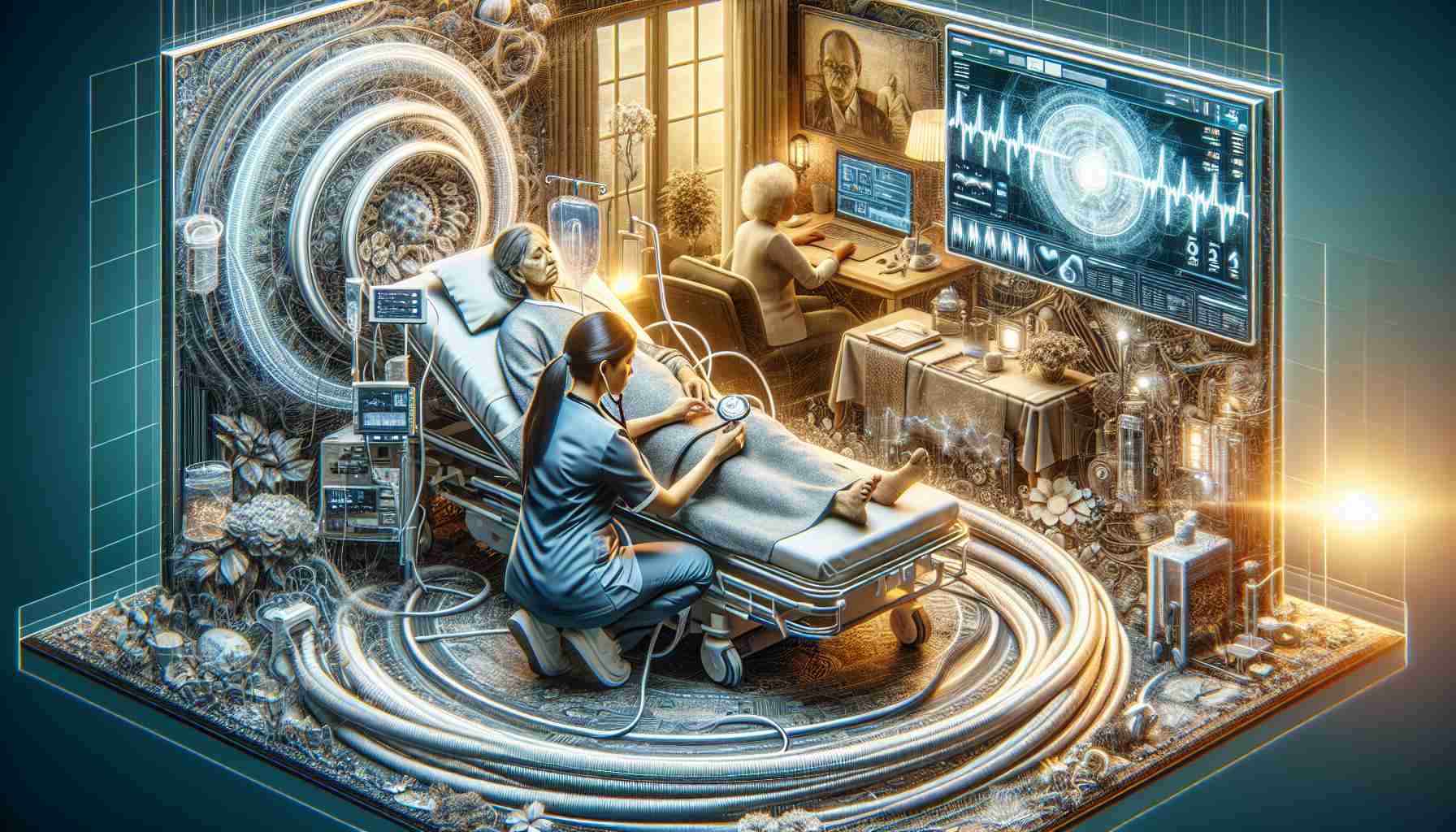- The Hospital at Home initiative is revolutionizing patient care by allowing recovery in the comfort of home.
- Sanford Health’s program combines virtual and in-person care, targeting rural populations with limited access to healthcare.
- This model helps reduce the stress of hospitalization and keeps patients connected to their communities.
- Despite initial skepticism, the demand for home-based care is increasing, especially among seniors.
- Technological advancements are enhancing remote patient monitoring, supporting the growth of home care services.
- The Hospital at Home model is seen as a vital solution for improving healthcare accessibility and patient satisfaction.
Imagine recovering from an illness in the comfort of your own home rather than the sterile environment of a hospital. It’s a vision that’s becoming a reality, particularly in rural areas and for seniors seeking accessible healthcare solutions. Amid political uncertainty regarding Medicare reimbursements, health systems are passionately pursuing the Hospital at Home initiative.
This innovative approach aims to bring healing to patients while minimizing hospitalization stress. At the forefront is Sanford Health, which has recently initiated a groundbreaking program designed to serve rural communities. The program seamlessly blends virtual care with in-person visits, allowing patients to receive treatment for conditions like pneumonia and dehydration from the comfort of their homes.
Executive Susan Jarvis highlights the profound impact this model can have on rural residents who often face daunting travel distances for healthcare. She points out that the aim is not just to treat but to keep patients connected to their communities, ensuring they don’t feel isolated during recovery.
Despite initial skepticism from some patients who equate hospital-level care with needing to be in the hospital, the program is poised for growth. With an increasing senior population demanding home-based care services and advancements in technology enhancing remote patient monitoring, this trend is set to expand rapidly.
The key takeaway? The Hospital at Home model is not just a trend; it’s a lifeline for communities, empowering patients to recover where they feel safest—at home. As health systems innovate around this concept, the future of healthcare looks brighter and more patient-centric than ever.
Revolutionizing Recovery: How Hospital at Home is Changing Healthcare!
The Hospital at Home Model: An Overview
The Hospital at Home (HaH) model is a transformative healthcare initiative that allows patients to receive hospital-level care in their own homes. This approach leverages technology and personalized care, aiming to reduce hospital congestion while providing convenience and comfort to patients, particularly in rural areas.
Key Features of Hospital at Home
1. Comprehensive Care: Patients can receive various treatments such as IV therapy, lab tests, and medication management without ever stepping foot in a hospital.
2. Team-Based Approach: Care is provided by a dedicated team of healthcare professionals, including doctors, nurses, and care coordinators, who monitor patients remotely and conduct in-person visits as necessary.
3. Technology Integration: Remote monitoring tools and telehealth systems play a critical role in keeping healthcare providers connected to patients and ensuring timely interventions.
4. Customization: Treatment plans are tailored to individual patient needs, combining medical care with support for emotional and social well-being.
Market Insights and Trends
The demand for home-based care is rapidly increasing, driven by an aging population and a growing preference for receiving care in familiar surroundings. Market forecasts predict significant growth in the Hospital at Home sector, with investments in telemedicine and remote monitoring poised to facilitate this trend.
– Market Forecast: The global home healthcare market is expected to reach $515 billion by 2027, highlighting the shift towards home-based services.
– Technology Trends: Advances in AI and IoT are optimizing patient monitoring and data management, enhancing care delivery in home environments.
Limitations of Hospital at Home
While the concept is promising, there are limitations to consider:
– Eligibility Criteria: Not all patients qualify for HaH programs, particularly those with complex needs that require intensive in-hospital care.
– Insurance Coverage: Reimbursement policies are still evolving, which can pose financial challenges for both providers and patients.
Questions About Hospital at Home
1. What conditions can be treated with Hospital at Home services?
Health systems can address a variety of conditions commonly treated in hospitals, including pneumonia, heart failure, chronic obstructive pulmonary disease (COPD), and dehydration through HaH initiatives.
2. How has technology improved the delivery of Hospital at Home services?
Technological advancements, such as telehealth platforms and wearable health monitoring devices, facilitate continuous patient tracking and timely medical interventions, ensuring high-quality care while patients remain at home.
3. Will Hospital at Home replace traditional hospital admissions?
While HaH programs significantly enhance healthcare accessibility and efficiency, they will not entirely replace traditional hospital admissions. They are best suited for specific patient populations who are medically stable and can benefit from receiving care in a comfortable home setting.
For more detailed information on advancements in healthcare, visit Healthcare Innovations.
